The right flowmeter choice can save you thousands annually in maintenance and measurement errors.
Select flowmeters based on three key factors: fluid properties (conductivity, viscosity, cleanliness), process conditions (pressure, temperature, flow rate), and accuracy/duty requirements. EMF suits conductive liquids, ultrasonic works for clean fluids where pipe access is limited, and Coriolis excels when mass flow or high accuracy (±0.1%) is critical.
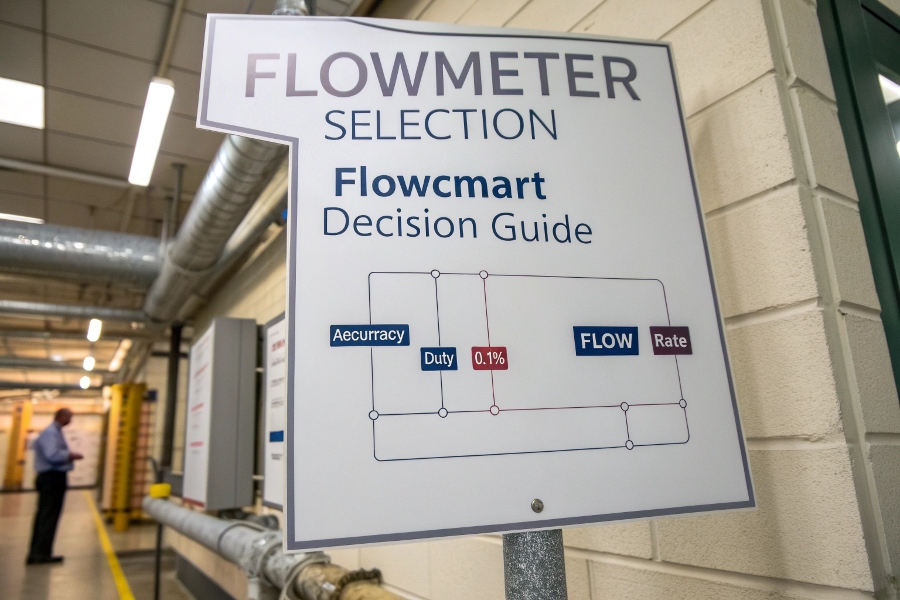
Decision Guide
Let’s break down the selection process systematically.
What Type of Flow Meter Should I Use?
The answer depends entirely on what you’re measuring.
Use EMF for water, wastewater, or any conductive liquid (≥5 μS/cm). Choose ultrasonic for clean chemicals, oils or water where pipes can’t be cut. Pick Coriolis when measuring mass flow of fuels, chemicals, or needing highest precision. Thermal mass meters work best for gases.
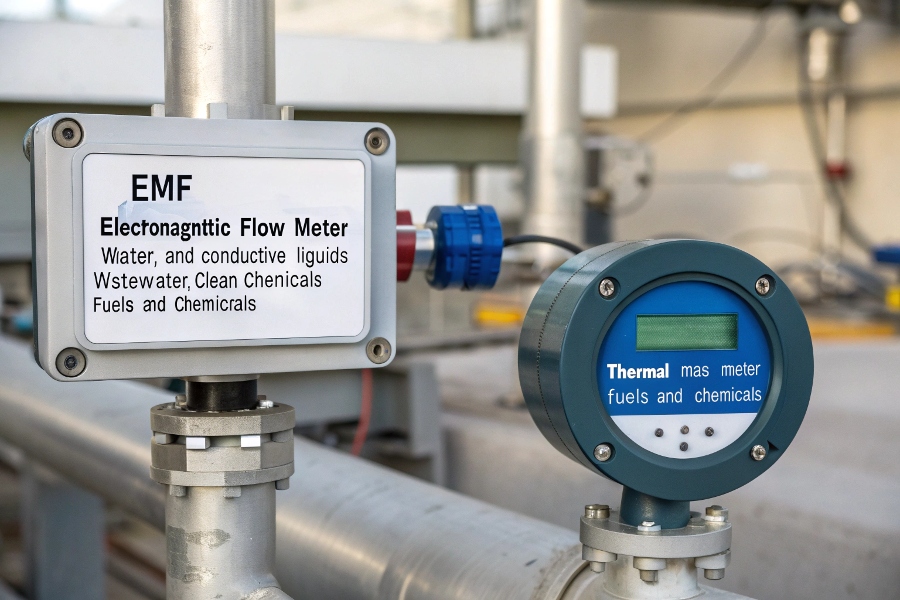
Fluid Compatibility
Here’s how different fluids match to technologies:
Flowmeter Technology Matrix
| Fluid Type | Best Technology | Typical Applications |
|---|---|---|
| Drinking Water | EMF | Municipal supply |
| Wastewater | EMF | Treatment plants |
| Diesel Fuel | Coriolis | Custody transfer |
| LPG | Coriolis | Tanker loading |
| Hydraulic Oil | Ultrasonic | Machinery monitoring |
| Natural Gas | Thermal Mass | Pipeline distribution |
| Slurries | EMF | Mining operations |
How Do You Choose a Flowmeter?
Follow this 6-step decision tree.
First confirm the fluid’s conductivity. Then check required accuracy (process control vs custody transfer). Consider pipe size and access. Evaluate pressure/temperature extremes. Verify maintenance capabilities. Finally, compare total cost (purchase + 10-year operation).
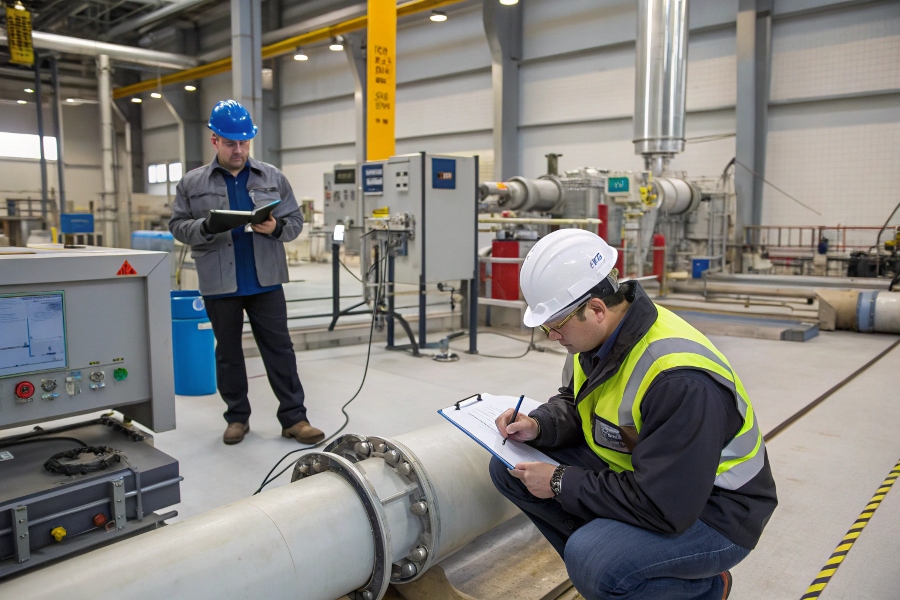
Decision Criteria
Critical technical considerations:
Key Selection Parameters and Limits
-
Conductivity Requirement
- EMF: ≥5 μS/cm
- Ultrasonic: Not applicable
- Coriolis: Not applicable
-
Viscosity Range
- EMF: Unlimited
- Ultrasonic: <50 cP
- Coriolis: <10,000 cP
-
Pipe Size Coverage
- EMF: 2mm-3000mm
- Ultrasonic: 15mm-5000mm
- Coriolis: 1mm-200mm
-
Pressure Limits
- EMF: Typically 40 bar
- Ultrasonic: 100 bar
- Coriolis: 1000 bar
When To Use Coriolis Flow Meter?
These premium meters solve specific challenges.
Deploy Coriolis when you need: mass flow measurement (not volume), custody transfer accuracy (±0.1%), handling of non-conductive fluids (oils, fuels), or measuring high viscosity liquids (up to 10,000 cP). They’re mandatory for batch processes in pharma or hydrocarbon accounting.
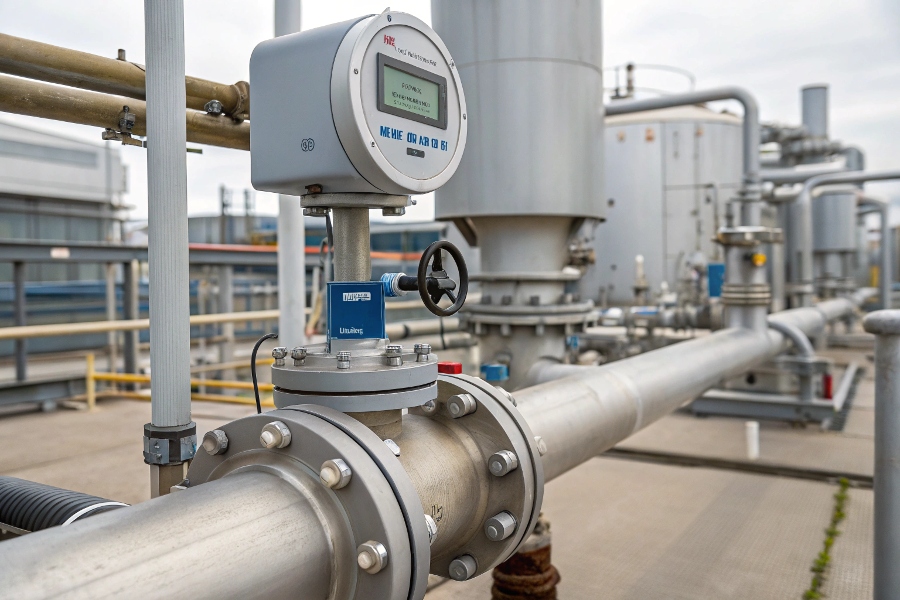
Premium Solutions
Ideal Coriolis scenarios:
Coriolis Meter Sweet Spots
-
Custody Transfer
- Fuel loading terminals
- LNG shipments
- Chemical batching
-
Challenging Fluids
- Non-conductive solvents
- High viscosity polymers
- Slurries with >60% solids
-
Process Critical
- Pharmaceutical mixing
- Food ingredient dosing
- Catalyst injection
-
Compensation Needed
- Temperature varying flows
- Pressure changes
- Density fluctuations
Which Type of Flowmeter Is Most Accurate?
Precision depends on proper installation.
Coriolis leads for mass flow (±0.1%) while EMF wins for conductive liquids (±0.25% volumetric). Ultrasonic can reach ±0.5% in ideal lab conditions but typically delivers ±1-2% in field installations. Turbine meters achieve ±0.25% but only for clean, steady flows.
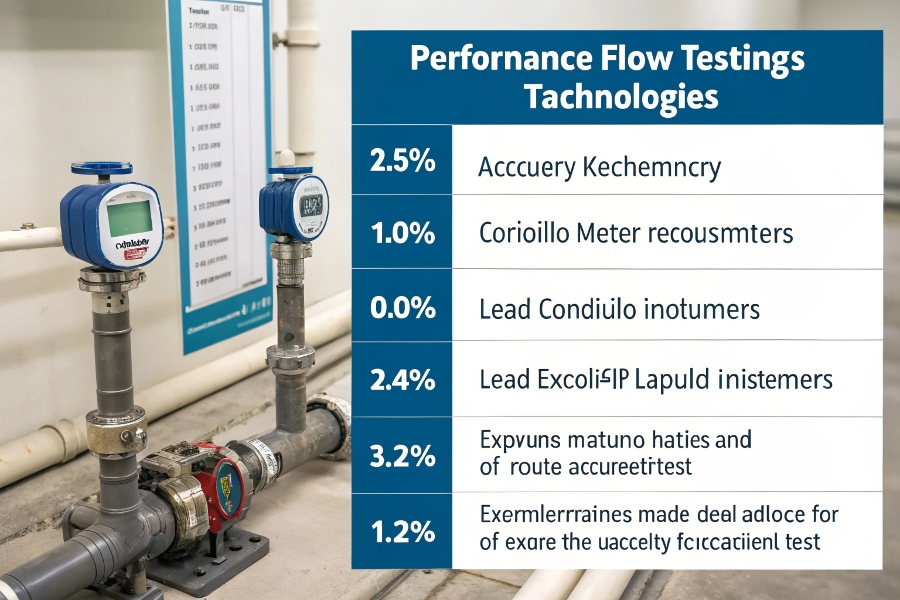
Performance Testing
Real-world accuracy factors:
Maintaining Meter Accuracy
-
Installation Requirements
- Straight pipe runs (5D-10D)
- Vibration isolation
- Proper grounding (EMF)
-
Calibration Needs
- EMF: Every 5 years
- Coriolis: 3 years
- Ultrasonic: Annual
-
Drift Causes
- Electrode coating (EMF)
- Tube stiffness changes (Coriolis)
- Transducer alignment (ultrasonic)
Cost Comparison Over 10 Years
Evaluate total cost of ownership:
| Metric | EMF | Ultrasonic | Coriolis |
|---|---|---|---|
| Purchase Price | $ | $$ | $$$$ |
| Installation | $ | $$ | $$$ |
| Maintenance | $ | $$ | $$$ |
| Energy Use | Low | Medium | High |
| Lifetime | 15+ years | 10 years | 20 years |
Conclusion
Match the flowmeter to your fluid first, then consider accuracy needs and budget. EMFs handle water applications economically, ultrasonic solves access problems, while Coriolis delivers uncompromising performance for critical measurements.
